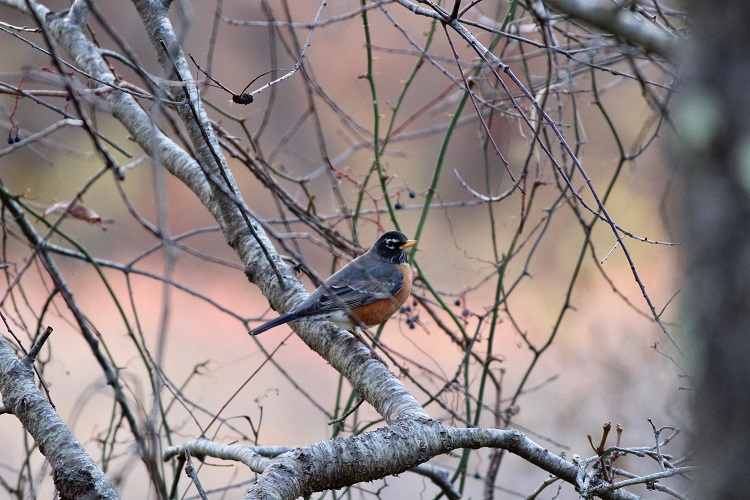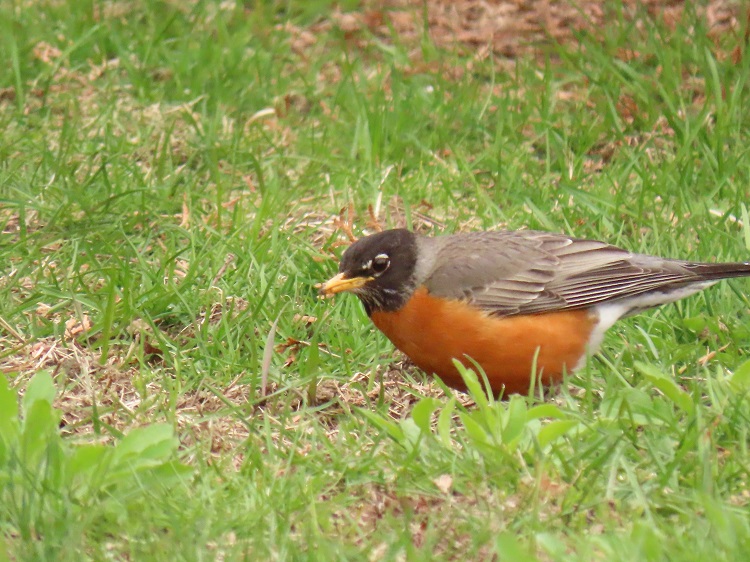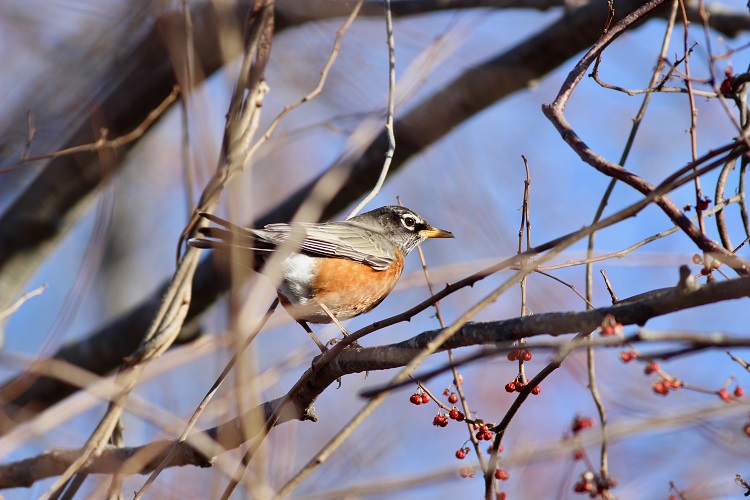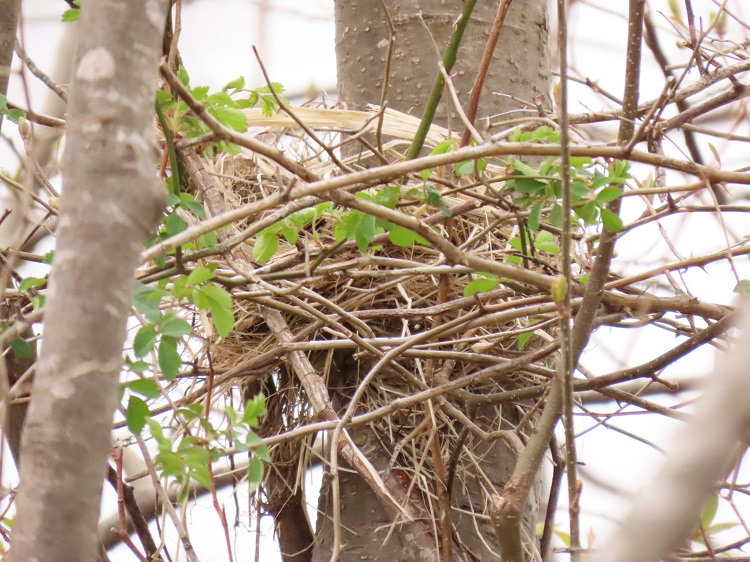American Robins are a familiar member of the thrush family. With its red-orange breast and flanks and dark upperparts, the American Robin is unmistakable once you know who you’re looking at.

Making their homes in a range of habitats, the American Robin is found in open forests, grasslands, your backyard, and cities. Among the earliest avian vocalizers in the spring, you will often hear them singing before dawn and late into the sunset. Their song is heard in 49 states, which is pretty incredible when you realize that we all hear the same familiar spring song signaling warmer weather.

American Robins are truly an example of the early bird getting the worm. They eat a range of foods, which include worms (of course!), insects, other invertebrates, and fruit. On rare occasions robins have been recorded consuming larger prey, such as snakes and shrews. In the mornings, robins focus on finding worms and other proteins, and when this activity dies down they shift their focus to fruits in the afternoons. In fall and winter robins switch to predominantly eating fruit, which may allow them to overwinter locally. However, eating enough fermented fruits, as robins will sometimes do, can lead to slight intoxication.

American Robin foraging – Lisa Hutchings 
American Robin with berries – Shelby Vance
Females and males may be very similar in their appearance, but your best chance at determining sex will be from behavior. A female will be the individual making the nest, incubating, and quietly calling to her male counterpart. A male will sing loudly and display his tail and wings for his mate. Males will also roost with other males and juveniles at night, while females remain with their eggs and nestlings.

Juvenile American Robin – Lisa Hutchigns 
Male American Robin – Lisa Hutchings
Robins nest in April, and during this time they lay unmarked blue eggs. The eggs hatch about 12-14 days later, with juveniles fledging in another two weeks. A successful American Robin pair can raise up to three broods between April and August of the same year. At times this can mean the male caring for fledglings while the female incubates another brood.

Want to do something for robins and other backyard songbirds?
- Consider getting a bird feeder if you don’t have one. Fill it with fruit mix or meal worms to satisfy the diet that robins prefer.
- Already have a feeder? Consider planting native plants around it to provide natural shelter when predators are about.
- Don’t use pesticides! Robins are often on our lawns, making them at-risk for pesticide poisoning. Let the robins and other ground foragers take care of your bugs instead!
- Create a backyard habitat using native bushes, flowers, and other plants. The native plants will attract natural food sources for the robins, bringing them into your yard more often.
Please note our new schedule:
Monday – Critter Card release from Facebook and email.
Wednesday – More resources through email.
Friday – Blog posted.
Learning Tools from Mass Audubon
Learn about American Robins from Mass Audubon.
Watch Mass Audubon’s video about American Robins.
Be Aware! What should you do with a baby bird that has fallen out of its nest?
Looking for more Resources and Activities?
Listen to their calls and songs and practice your own!
Learn more about baby Robins with this video.
Visit Mass Audubon’s April Vacation Virtual Camp: Spring is for the Bird’s page. Activities by grade level.
Participate in Citizen Science projects such as Project Nestwatch, Project Feederwatch, iNaturalist and eBird.
Read this comic about American Robins. Discuss or write about it.
Make a bird’s nest with this Bird’s Nest Stream Project.
Sing “Rockin’ Robin”
Sing along with this Raffi song called “Robin in the Rain”.
What’s Next?
What would you like to learn about from your backyard?
Stay tuned for the next Critter Card coming out on Monday, by email and Facebook.
Connect With Us
Would you like to be added to Lisa Hutchings’ VIP email list? Receive special resources such as nature slideshows and educational tools for at-home learning. Send an email to [email protected] requesting to be added to the VIP list.
Thanks to our Critter Card Fans
You’ve done it again. Just when I am running out of ideas and wanting to help my daughter out with the home schooling, you came up with Critter Cards. – Joppa Flats volunteer
Thank you for these cards. I have posted them on our school’s home learning website. They are very helpful – grade 5 teacher
So nice to see your videos each week! I’m learning from them and also thought I’d make cards for my grandson. – grandparent

